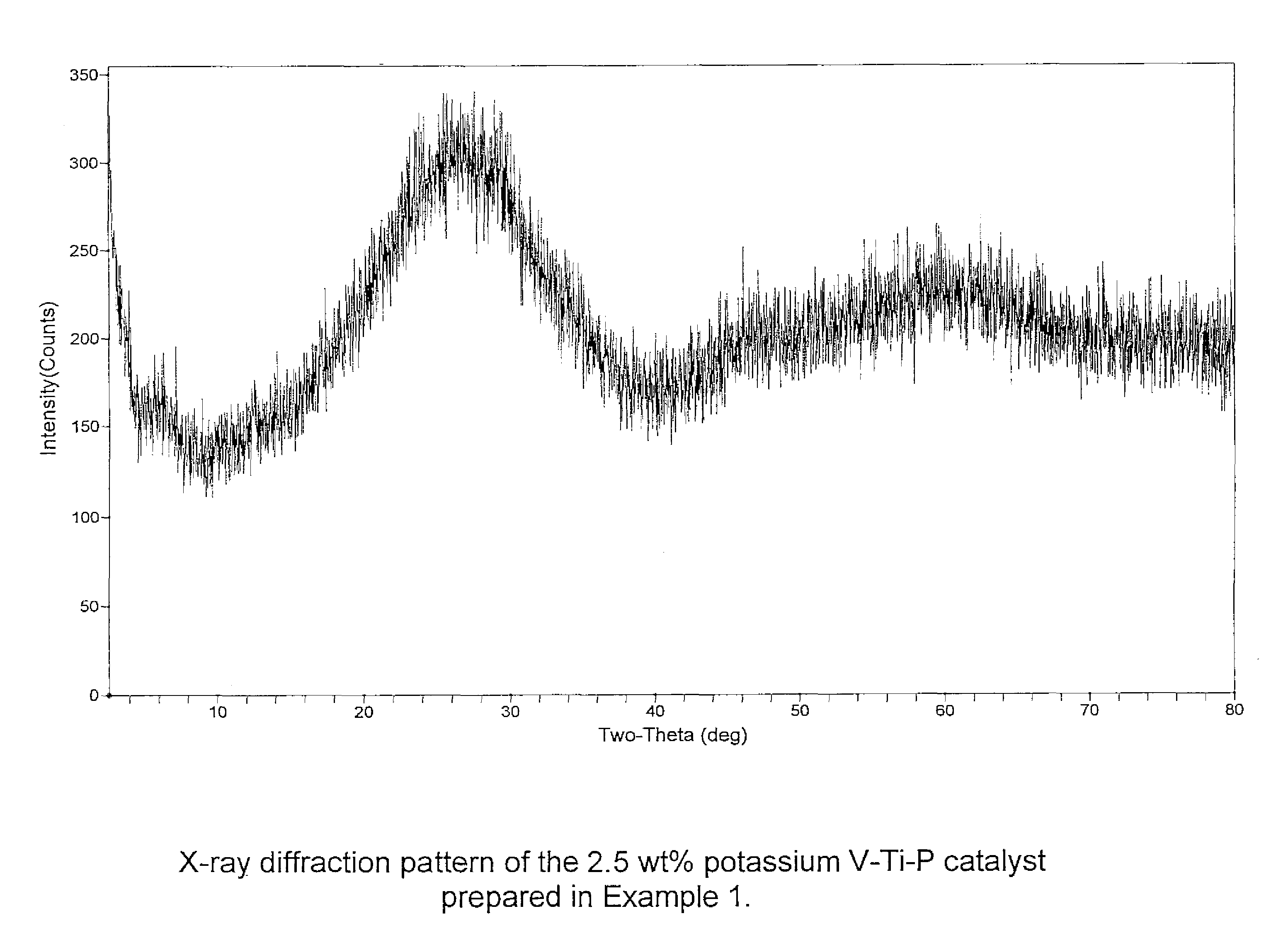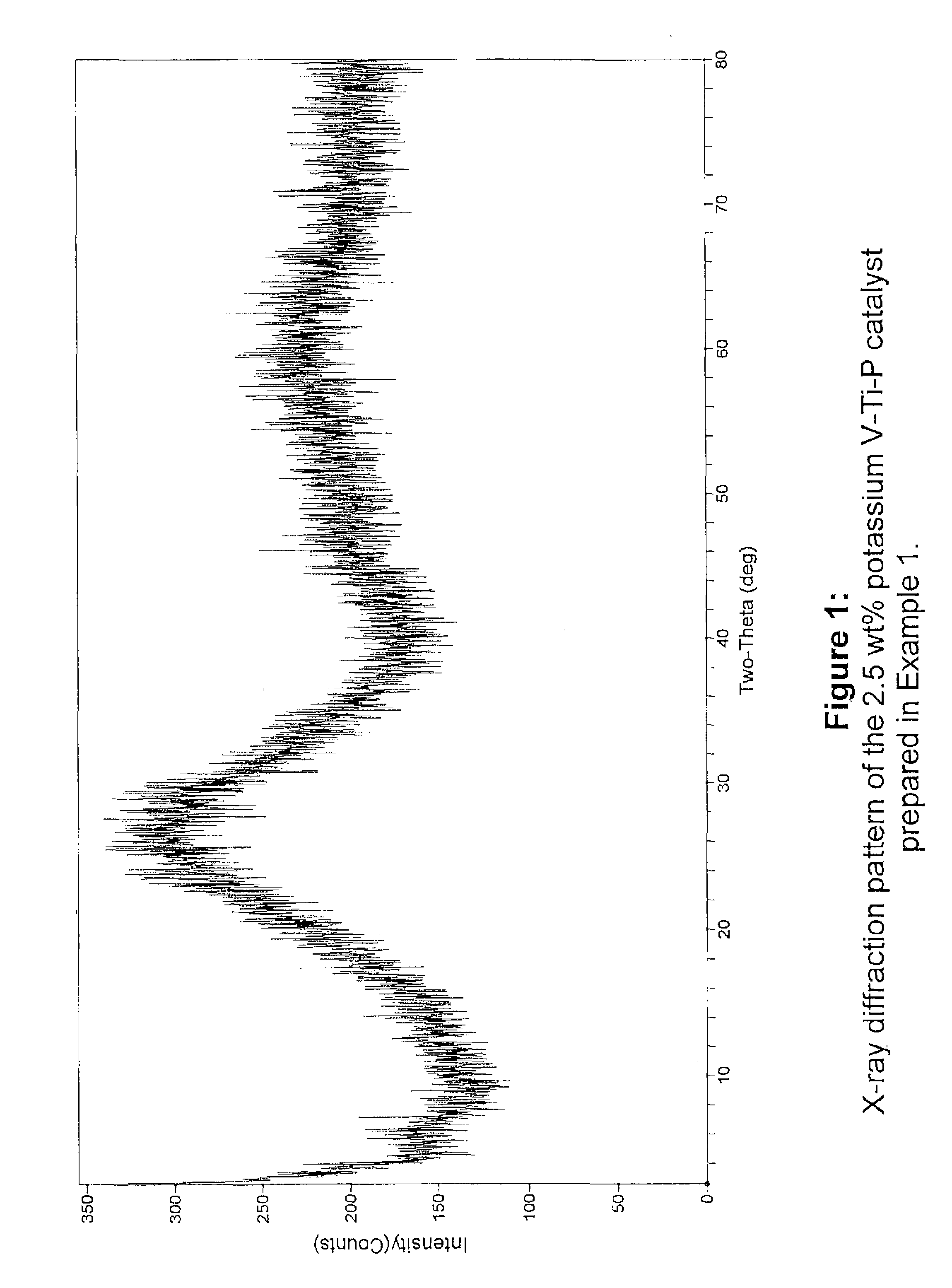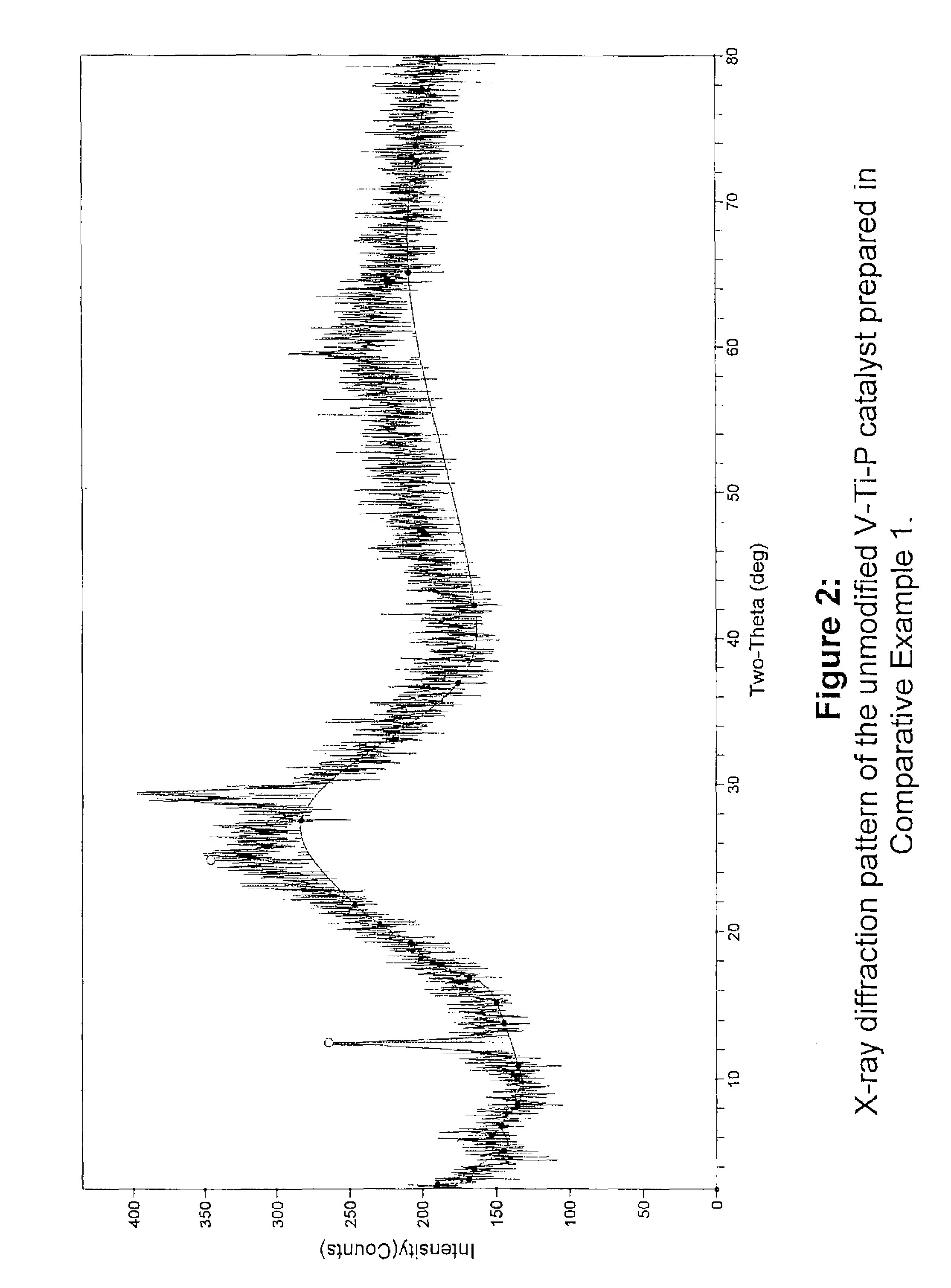Process for preparing modified V-Ti-P catalysts for synthesis of 2,3-unsaturated carboxylic acids
a technology of carboxylic acid and catalyst, which is applied in the field of catalysts, can solve the problems of affecting the efficiency of catalyst activation/preparation, affecting the synthesis efficiency of 2,3-unsaturated carboxylic acids, and tend to inhibit the condensation reaction of these catalysts
- Summary
- Abstract
- Description
- Claims
- Application Information
AI Technical Summary
Benefits of technology
Problems solved by technology
Method used
Image
Examples
example 1
Preparation of an Amorphous V—Ti—P Catalyst with 2.5 wt % Potassium Loading and Reactor Screening with an Aqueous Liquid Feed
1. Preparation of 2.5 wt % K modified V—Ti—P Catalyst
[0118]The catalyst in this example was first prepared by suspending ammonium metavanadate (19.54 g) and potassium nitrate (7.22 g) in 218.38 g of a 50 wt % titanium(IV) bis(ammonium lactate)dihydroxide solution followed by addition of 200 mL of deionized water in a 1-L three-neck kettle reactor equipped with a distillation head and a mechanical stirrer. The beige suspension was stirred at 700 rpm for 10 min at room temperature, then 105.11 g of 85% phosphoric acid was added followed by a rinse with about 50 mL of water. There was an immediate color change to bright yellow and thickening of the mixture, then a change to green then pale green over 20 min. The stirred suspension was then heated to reflux (oil bath set at 130° C.) and about 175 mL of water was collected via distillation over five hours, leaving ...
PUM
| Property | Measurement | Unit |
|---|---|---|
| particle size | aaaaa | aaaaa |
| weight percent | aaaaa | aaaaa |
| weight percent | aaaaa | aaaaa |
Abstract
Description
Claims
Application Information
 Login to View More
Login to View More - R&D
- Intellectual Property
- Life Sciences
- Materials
- Tech Scout
- Unparalleled Data Quality
- Higher Quality Content
- 60% Fewer Hallucinations
Browse by: Latest US Patents, China's latest patents, Technical Efficacy Thesaurus, Application Domain, Technology Topic, Popular Technical Reports.
© 2025 PatSnap. All rights reserved.Legal|Privacy policy|Modern Slavery Act Transparency Statement|Sitemap|About US| Contact US: help@patsnap.com



